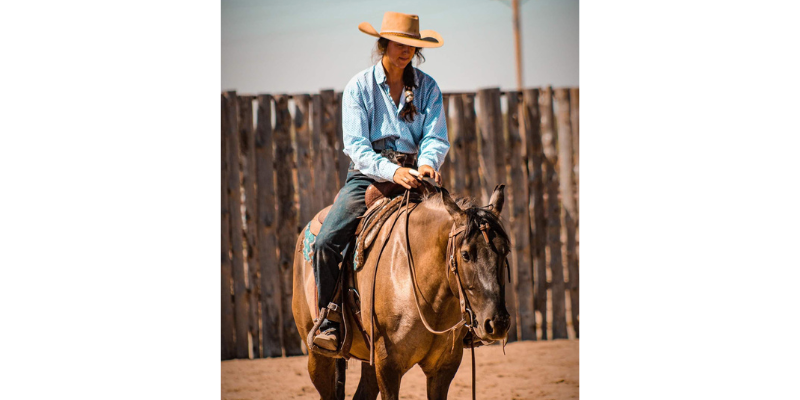By Jessica Pancost
Consider These Three Elements for Every Ride
One hot-button topic I’ve seen in the horse industry lately is the mindset you bring to the table training horses. As a trainer myself, I’d like to explore three particular subcategories of my own personal mindset I bring to the barn every day.
Emotion
The presence you bring to the arena should be as quiet and direct as you expect your horse to be. As prey animals, horses have developed incredible auditory and olfactory abilities. They can smell a predator from roughly 50 yards or react to a sound up to 2.7 miles away. As unconsciously predatory-presenting animals ourselves, I feel we often fail to consider the idea that our body language projects our emotions: our respiratory rate increases, our hearts beat faster, and suddenly we become a walking red flag for our horses. Couple that with unpredictable behavioral changes on our part, and it’s a wonder they let us near them at all.
An example of “changing boundaries” goes as such: You have a rough day, and go to the barn to relieve stress, you can’t stop thinking about that thing that set you off. Tensions are, high but you go out to catch your horse anyway. You catch him and walk toward your usual tacking area. On the way there, your horse begins to pass your shoulder. You see that as disrespectful and turn him around quickly, frustrated that he added to the problem instead of relieving it. Chances are, if this were to happen on a better day, you’d have brushed off the situation, maybe even sped up your pace to match his. This change in “what the correct answer is” creates inconsistency for the horse.
Ego
One of the most common predicaments I see, and went through myself in the age of social media, is young trainers who refuse to alter their programs to accommodate the needs of a particular horse. They believe no adjustments should be made in the program. It worked for one or a few horses, so it must work on every horse. The truth is most established programs will change depending on the horse. What works well for one may not work so well for another. On a basic level these young/inexperienced trainers just don’t want to set aside their pride and say, “I was wrong.” This is an example of a common human quality that most go to therapy to learn to wrangle. Pride is useless in working with horses (and people), and it’s generally best to just leave it out of the equation. You almost have to be addicted to failure, because just when you think you know everything about horses, they’ll teach you something different. All we can truly hope is for a sound enough mind to listen and adapt.
Time
The average lifespan of a horse is around 30 years. A well-cared-for horse can be ridden for up to that 30th year. It certainly offers perspective when we have thoughts like, “I have a barrel race in three weeks, and my horse isn’t ready,” or “Show season is going to start in May, but I live in Colorado where it snows until then, so I won’t be ready.”
The work and rides should certainly be put in, but competition dates can be moved, always. No buckle or winnings can replace the preparation done before said winnings. I have a hard-and-fast rule that there should be 1% improvement from the last ride. When you feel the pressure of time, it’s certainly easier to rush and ask for 2%. In turn, we only create a 3% regression that we can spend more time making up for. You have a lifetime left with your horse; it’s not worth the rush.
At the end of the day, the best advice I can give when it comes to training on a horse is to just ride your horse. Horses cannot be trained through osmosis; sitting on the couch, thinking about what you can do to make the horse better but not putting in the time simply doesn’t work.
See this article in the January/February 2023 online edition:
January/February 2023

Jessica Pancost has trained under a number of professionals in the horse and cattle industry. She began under her father, Chuck Pancost, who trained Quarter Horses on the racetrack and won significant purses in New Mexico, Colorado, and Texas. They worked horses together when she was young on her family’s ranch in Stoneham, Colorado. She then interned with quite a few trainers and worked at breeding facilities in Colorado and New Mexico. Pancost’s business focuses on everything from reining to cow horse to her favorite: team roping. She’s recently completed a significant amount of equine behavior, nutrition, and musculoskeletal health research that has helped her produce excellent colts and roping horses, but she always searches for more information. Learn more at facebook.com/thunderbirdequine

